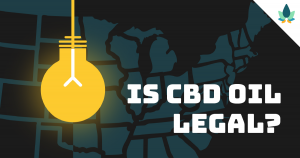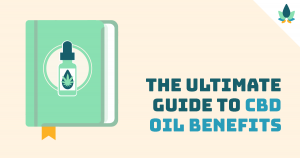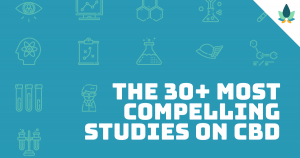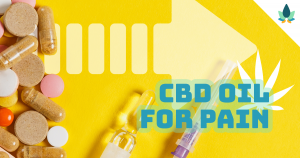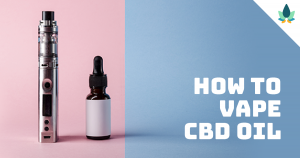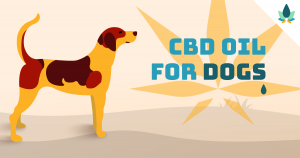Let’s face it: CBD oil’s lack of regulations means it’s easy to accidentally buy impure products with added filler and other…crap.
High-quality CBD oil is out there, but you have to dig to find it. That’s why we created this CBD buying guide—to teach you how to buy CBD oil, how to choose the best CBD product type, the differences between raw, decarboxylated, filtered oil, and more.
Why trust us? Most of the information out there on CBD is written for scientific journals, by companies trying to sell you something, or by trendy sites only interested in this week’s buzzword.
Our goal is to provide the most accurate information about CBD and do all the research so you don’t have to. Read more here.
CBD is misunderstood as a dietary supplement and many people don’t understand the differences between THC and CBD. Even if you do, pure CBD oil isn’t a guarantee due to the lack of government regulations on how it’s produced and sold.
To find pure CBD oil, follow these simple steps.
How to Buy CBD Oil: 5 Simple Steps
1. Understand The Basics of CBD
There are two types of CBD oil – oil derived from hemp plants and oil derived from marijuana (which typically contains >0.3 percent THC).
How Does CBD Work?
There are tons of benefits of CBD oil. From pain and inflammation relief to help with conditions like insomnia or ADHD, it’s one of the closest things we’ve found to a miracle drug.
But it’s important to know how CBD oil works in order to buy the best quality.
Basically, cannabidiol (CBD) binds with various receptors in your body to work its magic. For example, CBD has a strong affinity to fatty acid-binding proteins (FABP) that are responsible for chaperoning lipids to the cell interior.
This delays adenosine uptake in the cell which is responsible for inflammation. (Bisogno et al., 2001; de Mello Schier et al., 2014)
You don’t need to understand the science to get the takeaway: you’re putting something in your body that will affect your cells. Wouldn’t you only want the purest, highest-quality product if it’s basically becoming a part of you?
Another common question we get…
Is Buying CBD Online Legal?
Yes, buying CBD online is legal as long as it’s derived from industrial-produced hemp (not marijuana plants).
However, there are no testing regulations for these products, so it’s very hard to know what you’re getting when you buy online. In fact, the FDA actually issued a warning for making false claims of effectiveness and medicinal benefits because so many illegitimate companies were selling fake products while claiming they were CBD oil. (1)
But that’s why we wrote this guide—to help you buy CBD oil online without worrying about scams or low-quality products. So, keep reading!
Differences Between Raw, Decarboxylated, And Filtered Oil.
There are actually three forms of CBD in CBD products: raw, decarboxylated and filtered.
RAW CBD (also called “CBDa” or “cannabidiolic acid”) is the pure form of CBD found in the plant. It’s the acidic precursor to CBD. CBD begins as CBDa. The oil is extracted from the plant using the CO2 method, then packaged without being altered in any way.
CBDa turns to CBD through a process called DECARBOXYLATION, a chemical reaction that’s activated by heat. This creates CBD oil without losing most of the phytonutrients found in the raw compound. It still contains plant matter, just much less.
The final form of CBD—FILTERED OIL—is created by, you guessed it, filtering the decarboxylated CBD to remove any leftover plant parts. Filtered oil has the highest concentration of CBD (~25% compared to ~15%), but lacks the phytonutrients from plant matter.
So, this is best for those who are only interested in the benefits of CBD itself and don’t care about the added benefits of the plant (many of the same benefits as phytonutrients found in vegetables and other plant-based foods).
Which form of CBD you want is up to you. It’s sort of like juicing—you can determine whether you blend the fruits into a smoothie (i.e. raw CBD), juice them with a juicer and leave the pulp (decarboxylated), or juice them and filter out the pulp (filtered).
2. Figure Out What You Want/Need
Now that you understand the basics, it’s time to determine what it is you’re looking for in a CBD product. Specifically, your purchase can be influenced by:
- Taste
- Price
- Time to Kick In
- Ease of Use
- Concentration
Let’s break these down.
Taste
If you’re consuming your CBD oil by eating it (edibles), the taste is probably a factor. However, you can also taste tinctures and the vapor produced by e-liquids, if you decide to take those forms instead. More on the types of CBD oil in Step 3.
For some, taste doesn’t matter. For others, it’s hugely important. That’s something only you can decide. But, there are a few things worth considering:
- Pastes, concentrates, and other strong CBD products taste a lot like hemp, due to the high concentration of CBD. If you’ve never tasted it, it’s been described as “earthy” or “grassy” tasting. It’s somewhat similar to wheatgrass if you’ve ever had that.
- Vape oils, tinctures, and edibles can have added flavors, like mint or vanilla. However, many of these are artificial or “natural” flavoring chemicals, so you may be adding something not everyone would want in their body.
- If you don’t want to taste hemp at all, capsules or topical balms are alternative ways to take your CBD.
Price
When it comes to CBD, cheaper isn’t always better. While you can certainly find inexpensive CBD products online, many of them are impure or even complete rip-offs.
However, expensive doesn’t mean quality. Some scammy companies increase their prices to give the illusion of quality. More on how to determine if a company is legitimate or not in Step 4.
Also, you shouldn’t go spending a lot of money on equipment until you’ve tested different types of CBD to find out which is your preferred consumption method. You may think you’d like to vape and purchase an expensive set-up only to find you prefer tinctures or balms.
Time To Kick In
Some people want quick relief, while others prefer a slow release that lasts longer. Maybe you’d like the option of either.
For example, vaping your oil takes effect almost immediately, but the compound is processed by the body very quickly, so the effects usually don’t last longer than an hour or two.
On the other hand, capsules and edibles take longer to kick in (20 minutes to 2 hours) because they are broken down in the stomach rather than passing directly into the bloodstream through the lungs. The effects last longer (4-6 hours), but are not quite as strong.
 How Long Does CBD Take To Work?
How Long Does CBD Take To Work?
Typically, the longer CBD takes to absorb, the longer it lasts. Likewise, if CBD absorbs quickly, it will usually offer immediate, short-term relief.

CBD generally takes between a few minutes to a couple of hours to work fully, depending on the dose, the consumption method, and the symptom that’s being treated.
If you take CBD sublingually (under the tongue), the effects kick in within 20-40 minutes and last between 4-6 hours. If you apply topically, it takes up to an hour to feel the effects and lasts up to 5 hours.
Which method you choose depends on what you’re looking for. It’s a good idea to have multiple options depending on your needs!
Ease of Use
Some methods (taking a pill or applying a cream) are easier than others (buying a vaporizer, learning how to use it and buying the oil, cleaning it, etc.).
That said, every method is pretty simple.
For the easiest method, we recommend tinctures, since they are small, discreet, and you just need to place a drop or two under your tongue.

Concentration
Concentration is important because it shows the purity of the product and the type (raw vs filtered, etc.). It’s something you’ll definitely want to know.

Concentration is measured in milligrams of CBD, which should always be clearly stated on the product label or packaging.
What often confuses people is the “total volume” of CBD. Ignore that—you only want to pay attention to the MG.
Knowing the MG of CBD in your supplements is also great for comparing products and prices.
Note that some manufacturers use percentages instead of milligrams. For example, if a container has 1000 milligrams of hemp oil and 100 milligrams of CBD, that would mean it has 10% CBD.
Fortunately, most manufacturers are no longer using this method, which makes it easier to compare different products.
How Much CBD Should You Take?
Similar to a daily vitamin supplement, CBD works best when taken daily and consistently.
If you’re new to CBD, it’s a good idea to start with two to three milligrams per day. You can always increase the amount if you don’t feel the effects as strongly as you’d like. But, taking too much to start can lead to drowsiness and lethargy, as well as an upset stomach and diarrhea.
The negative effects aren’t that drastic since CBD is not psychoactive, but I’m sure you’d like to avoid having a “crappy” day!
Getting CBD for your pet? We recommend starting them at 10 milligrams of CBD per ten pounds of weight. For more help, check out our full guide to CBD for dogs.
3. Choose A Product Type
Now that you know everything you should consider when shopping for CBD oil, it’s time to choose a product type. Specifically, there are four main ways to take it:

Inhalation
smoking/vaping

Topical
Application And Balms

Sublingual
pastes & tinctures

Ingestion
capsules & edibles
We go into detail on each of these methods in our guide on how to take CBD oil, but basically, the type you choose depends on what you’re most comfortable with as well as the other factors we already discussed in the last step (mainly taste and immediacy of the effects).
The most simple and easy to use methods are tinctures or capsules.
4. Find A Reputable CBD Company
As we mentioned earlier, there are a lot of scammy companies online selling fake or impure CBD products. While this is concerning, it’s fairly easy to tell when a company is illegitimate.
Here are the things to look for:
< 0.3 PERCENT THC: Legal CBD products contain less than 0.3 percent THC and are derived from hemp plants rather than marijuana plants. If their products contain more than 0.3 percent THC and you are not legally permitted to purchase THC, you should not buy from them.

GMP CERTIFIED LOGO: GMP stands for Good Manufacturing Practices. There are agencies who control the authorization and licensing for manufacturers to be able to legally sell CBD products, and the manufacturers have to go through them to get this logo. If they don’t have it, you should not buy from them.
CUSTOMER REVIEWS: Real customer reviews are one of the quickest and easiest ways to tell if a company is legitimate. However, because it’s so easy to create fake reviews, you should not rely on reviews alone to judge a company.
NO UNREASONABLE OR UNBACKED CLAIMS: CBD oil has many amazing benefits. However, it cannot cure cancer or many other major diseases or ailments. If a company is making unreasonable claims and doesn’t have the data or studies to prove it, consider it a red flag.
DOES THE COMPANY HAVE A PHONE NUMBER? DO THEY ANSWER IT? Another easy and quick way to tell if a company is legitimate is if they display a customer support number. If they do, just call the number and see if someone actually answers. If they do, this is a good time to ask questions, like “Can you provide a COA for your products?”

To Help You Vet A Company Further, Here Are Four Questions You Should Always Ask Them:
1. Where Was The Hemp Grown And What Might Be In It?
Hemp, like any other vegetation, is able to absorb the good (and bad) chemicals and compounds found in the air, water, and soil where it’s grown. So, if the hemp is grown outside of the US or in unknown areas, it could contain pesticides, herbicides, or heavy metals.
You want to try to get CBD that’s organic and can be traced back to its exact farm. If they can’t tell you where the hemp was grown (and prove it), I would pass.
2. What’s The Concentration of CBD In The Product?
While the label and online product pages probably tell you how many milligrams of CBD is in the product, it can still be misleading. The actual concentration of the product is how many MG of CBD are in it in relation to the total volume
So, you may buy something with 250 MG of CBD in it (a good starting dose), but the volume is four ounces, which means you get a mere 62.5 mg of CBD per ounce—not nearly enough to see the benefits of using CBD.
Unfortunately, a lot of companies actually water down their product to make more money from it. Always ask this question!
3. How Is The CBD Being Extracted?
Extracting CBD from a hemp plant isn’t as simple as juicing a fruit. There are multiple extraction methods, and some are more harmful than others.
For example, the cheapest (and most harmful) method is to use harmful solvents that leave chemical residue in the oil. Not something you want to be ingesting!
The best method uses carbon dioxide (CO2) under high pressure and extremely low temperatures. This extracts the oil without adding harmful contaminants because the CO2 simply dissolves when it’s no longer under intense pressure.
4. How Do I Know The CBD Oil Is Pure?
Ask them this, and see what they say.
They SHOULD immediately tell you about their Certificate of Analysis. If not, don’t forget to ask for one. And take a look to see if any red flags show up (like misspellings, language that doesn’t make sense, etc.).
5. Choose A Company & Buy!
Now you’re ready to buy CBD oil! Here’s a quick recap on all the steps we’ve covered:
- UNDERSTAND THE BASICS OF CBD. Know that CBD works by binding to receptors in your body and there are different versions of CBD depending on how processed it is.
- IGURE OUT WHAT YOU WANT. Do you care more about price, taste, ease of use, or immediacy of effects? Take each into account.
- CHOOSE THE RIGHT PRODUCT TYPE. CBD tinctures, vapes, capsules, etc. are available to you. Choose the one that acts as fast as you’d like!
- FIND A REPUTABLE COMPANY TO BUY FROM. Never trust a company at face value. At the very least, call them and ask for a CoA, and check their customer reviews.
- BUY YOUR CBD OIL! You’ve done your due diligence and can be confident what you’re putting in your body is high-quality. Great job!







 How Long Does CBD Take To Work?
How Long Does CBD Take To Work?